Characteristic #2
Since the child, particularly the religious life of the child, is central to the interest and commitment of the catechist of the Good Shepherd, the catechist embraces Maria Montessori’s vision of the human being and thus the attitude of the adult regarding the child; and prepares an environment called the atrium, which aids the development of the religious life.
What is Maria Montessori’s vision of the human person?
“Everyone accepts the fact that the adult is supposed to play a role in forming the child, but who knew that the child is supposed to be forming the adult, just as much.” Maria Montessori
Maria Montessori saw as one of her greatest discoveries was the planes of human development. This is when she recognized that the human person underwent a profound change as they entered different stages of their life. Though this understanding it is possible to see why some expectations of children are unreasonable at some ages but very necessary at others.
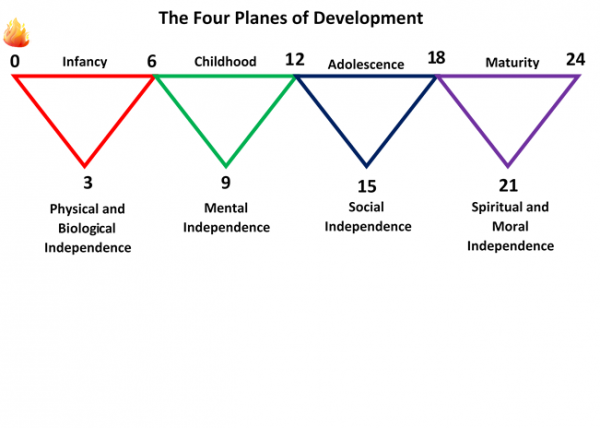
When you look at the planes, you can see the horizontal line of life, which indicates the age of the child. The lines that form the triangles show how the child moves towards a greater sensitivity to the needs of their age and then away from that intensity as they move toward the next plane. Montessori observed that development is intense at the beginning of a plane, peaks, and then tapers down to the next plane, in preparation for the beginning of a new stage of development.
For the first plane of development the goal is self-construction or to build a self.
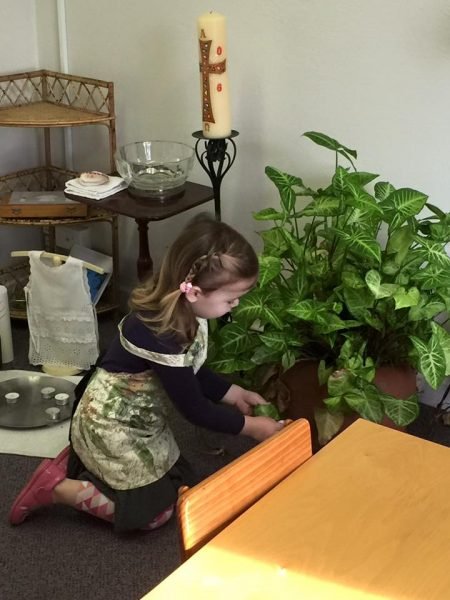
The goal of the second plane of development is building the social self and how to be in society. No longer does the child need just the immediate family. Now the child is ready to explore the larger society and learn how to be with others and with other families.
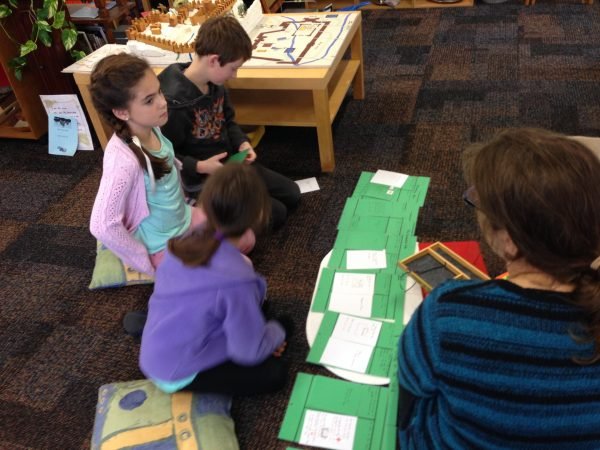
The goal of the third plane of development is the birth of the adult self. It is another creative period, the creation of what is most valuable in their adult personality.

The goal of the fourth plane of development is the vocation, recognizing and giving back to society.

Within each plane there are specific sensitivities given that facilitate the achievement of the goal. The last characteristics of that each plane builds on the previous plane before it. So a plane that was not fully completed carries into the next plane. Life goes forward not backward. So as adults assisting children, we want to help children achieve the fullness of each plane of development.
The first plane of development is the most important phase in the life of the human person. Sofia Cavalletti called it the Golden Age of Relationship, the period of falling in love with God.
Two Conditions for any Human Development
Montessori said that there were two conditions necessary for any human development to occur.
- First, the child’s intimate, positive, loving relationship with the people and things in his/her environment. It’s so important for this first plane of development. The child being brought into this complete, unconditional, totally accepting and loving relationship.
- The second element is freedom.
All humans have certain tendencies or behavior patterns that drive the fulfillment of the fundamental needs. No matter the location, culture, or ethnicity, all humans throughout history have followed the same natural laws that lead to actions and interactions with the environment and each other.
All humans are driven:
- To Explore- to know
- To Orient – to find one’s place in the world where one feels loved and wanted
- To Order – to put things in their place, physically and mentally
- To Observe and to Abstract
- To Work
- To strive toward Self-Perfection
- To Exactness
- To Communicate – to express one’s self, to be understood, which leads to sharing, cooperation, and preservation of our knowledge, skills and achievements
- To have Self-Control
What then should the attitude of the adult be regarding the child?
When it comes to the time for more formal learning the environment most children are placed in is a school of one sort or another. In a traditional school classroom the primary relationship is thought to be between the teacher and the child. In the Catechesis of the Good Shepherd, we believe that God is the teacher, he works through the environment and the materials to help the child to form a personal relationship with him. The role of the adult is that of a guide or servant, waiting for the time to give a new presentation to allow the child to go deeper into their prayer with the Holy Spirit.
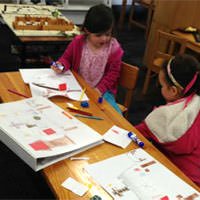
The Catechist is not the teacher. The Catechists role is to prepare the environment, to provide the child with materials that will help the child to draw near to God.
As adults, we seek to serve the child in this regard. To enable them to come into God’s presence and spend time with him by themselves.
It is not unusual that in this environment, the children can become so absorbed in their work that the adult can step aside and wait until they are needed.
What is the prepared environment, the atrium, and how does it aid the child’s religious life?
Montessori noted that the environment itself is a teacher; the children learn much more from interaction with their environment than they do from the direct instruction of their teacher.
If our aim is to help children to enjoy their relationship with God, we must ask, “What kind of environment can we create that will respect and cultivate the child’s needs and capacities at this level of their development, especially in terms of their spiritual development?”

We want to create a space where it is okay to be small. Where a child can function independently, enjoy freedom of movement, freedom to repeat works over and over on one’s own without interruption etc.
The Atrium environment is not a classroom. Cavalletti says, “It is not a place of religious instruction, but of religious life.”
The Atrium does not replace the church. It is to initiate the child into the life of the church and needs to be the work of the whole church. Cavalletti says, “The initiation of a child into the Christian life is not a work that can be fulfilled by the catechist alone, nor by the parents alone. It is the whole Christian community that proclaims Christ, and the child must enter into contact with the whole Christian community. The catechist’s work must be sustained and confirmed by a community that lives what the catechist proclaims.”
“Everything in the Atrium is either a passage to prayer or prayer itself”
The Atrium is a place of Prayer and Worship, a place of quiet and peace, a place of retreat. A place where quite spontaneously, work and study become meditation, contemplation and prayer.
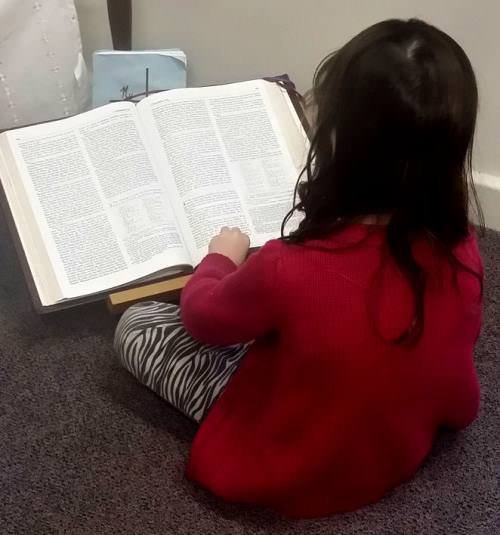
It is more like a church than a classroom. It is not so much a place of instruction, as Holy Ground, where Christ can be encountered in word or action at any moment.